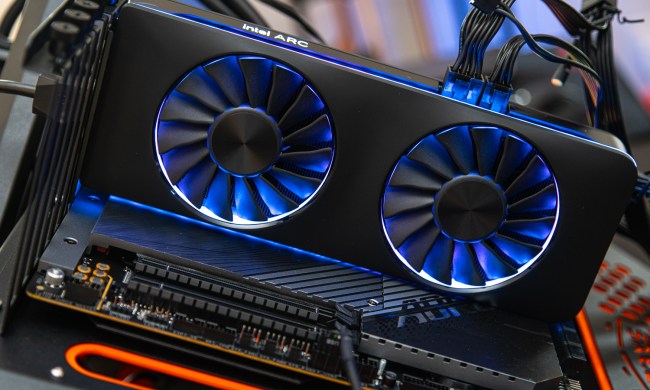Although Nvidia may have unveiled quite a competitive mid- to high-range graphics card with its GTX 1070 reference card, the partner companies, of course, have their own ideas about what the graphics processing unit (GPU) should be. EVGA’s first take on the card gave it a new lighting system and its ACX 3.0 cooler design, which should improve noise and cooling performance.
As with the graphics card announcements from the likes of MSI, EVGA’s GTX 1070 comes in four distinct flavors. The first is the near-reference Founders Edition, which uses the same cooling and styling of all the third-party manufacturers who offer the same version. It comes in clocked at 1,506MHz, boosted to 1,683 on the core, and a memory clock of 8,000MHz.

All of those specifications are almost identical for the EVGA GTX 1070 Gaming ACX 3.0, apart from a memory clock that is bumped slightly to 8,008MHz. You’d never be able to tell from the outside, though. It ditches the Founders shroud for a bespoke EVGA design, which features twin fan coolers over a large aluminium heatsink. Those fans only spin up when needed, keeping the card very quiet otherwise, and feature double ball bearing centers, so should have a “400 percent longer lifespan,” according to an EVGA release.
A new heatpipe design is said to allow for a 10 percent improvement in cooling potential through better conductivity, and memory is said to operate at a lower temperature thanks to a PCB wide heatsink that cools both the memory and GPU mosfets.
The ACX 3.0 cooling system also supports RGB LED lighting, which shines through the grill sections to offer a customized and unique-looking graphics card.
This card is also available in a Superclocked Gaming edition. It features the same cooling system as the standard gaming edition, but its core clock is bumped up to 1,594MHz which boosts up to 1,784MHz.
Everything else is the same. Where things potentially get interesting, though, is with the GTX 1070 FTW Gaming version. Although that features the same specifications as the others in most respects, we don’t know what its core clock speeds are right now. It’s presumably higher than the Superclocked version, but we’ll have to wait and see.
We’re also waiting on pricing and availability information, which should be coming soon.




